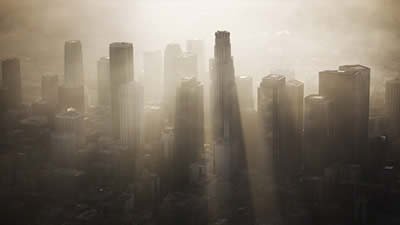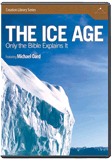
Australia’s Great Barrier Reef under Threat from Climate Change
Is global warming to blame?
The rate at which the corals grow in the Great Barrier Reef of Australia has declined recently. Is global warming to blame?
The rate at which corals extract calcium from seawater to build their hard skeletons and thus grow has declined dramatically in the last 20 years, and signs point to “man-made greenhouse gas emissions” as the culprit, according to a study just published in the journal Science.1 Australia’s Great Barrier Reef is 1600 miles long and, thus, is the largest system of coral reefs in the world. It’s both a world heritage area and an Australian “national treasure.”
Researchers with the Australian Institute of Marine Science near Townsville on Australia’s Great Barrier Reef coast have looked at the growth records in the skeletons of massive porites corals at 69 of the reefs that together make up the Great Barrier Reef. Like trees, each year these corals grow a new band that is laid down in their skeletons, recording details of the environment in which the skeletons grew. Thus, these corals have been found to be some 400 years old, and they show that the extraction of calcium from seawater to build their skeletons has declined by 13% between 1990 and 2005. The researchers stated that these data suggest such a severe and sudden decline in calcium extraction is unprecedented in at least the past 400 years.
One reef expert has described these findings as very important and “frankly pretty scary.”2 Slower growth might not seem like a big problem, says John Bruno, an associate professor of marine ecology at the University of North Carolina at Chapel Hill, but reef scientists are concerned that this will exacerbate the impacts of other threats to coral reefs. For example, it will slow the vertical growth of corals, making it harder for them to keep up with rising sea levels. It could also slow recovery from other disturbances, such as coral bleaching episodes and destructive storms.
So, what has caused this decline in the ability of these corals to grow? Sampling the annual growth rings of these porites corals made it possible to compare specific years to water temperature records and other data. Several potential causes were ruled out by the researchers, among them sewage and other run-off, since many samples were originally collected far from the coast. Disease is also ruled out because the samples were all from corals that had been healthy. Thus, the researchers concluded that the “two most likely” factors were warming sea temperatures and more acidic oceans. Both these factors are tied to carbon dioxide emissions. For example, as the carbon dioxide levels increase in the atmosphere, seawater is made more acidic. These researchers noted that their findings confirm laboratory experiments and computer models predicting negative impacts on corals from the rising carbon dioxide levels in the atmosphere.
For a number of years, Australian research scientists have been alarmed at the growing threats to the Great Barrier Reef. Of course, there have always been natural calamities that have threatened these reefs, such as silt from the coastal rivers that flood during the annual wet season. However, man’s activities are adding to such threats. For example, sewage and other pollutants, as well as fertilizers used in agriculture, are also swept onto the reefs by these annual floods. The Great Barrier Reef saw severe bleaching in 1998 and 2002, the two hottest summers on record. Such bleaching has been tied to warmer ocean waters and happens because the organisms that live in the corals to create their colors are expelled due to the warmer waters. Scientists have warned that the northern end of the Great Barrier Reef could see severe bleaching again over the next few months during the current Southern Hemisphere summer, as ocean water temperatures are again warmer than normal.
So, should we be concerned about these threats to coral reefs, such as those in Australia’s Great Barrier Reef? Absolutely! Corals create the physical structures that thousands of other species depend on. They play a role analogous to trees that create forests. When corals die, so do the fish and other animals that live on the reefs. Loss of these reefs would be a devastating blow to one of the earth’s major ecosystems (and, of course, my native country would lose a major tourist attraction!).
However, can we do anything to change this doomsday outlook? Reef expert John Bruno claims that we will almost certainly see this problem grow over the next few centuries due to “greenhouse gas emissions.” Furthermore, we don’t know by how much, or how quickly, corals can acclimate to this climate change.
Of course, we can only deal with those impacts due to human activities. For example, the Australian government is currently taking action to reduce sewage and other pollutants, including fertilizers, in the runoff from the coastal rivers that impact the waters around the reefs. But can we deal with the rising carbon dioxide levels in the atmosphere that are said to be the cause of warming sea temperatures and the rising acidity of the ocean waters? Many experts claim that the increased levels of carbon dioxide measured in the earth’s atmosphere are primarily due to human activities. This has created a controversy over global warming and climate change. But not all experts agree. There are now over 650 dissenting scientists who are convinced that the global warming claims are all “hot air,” and that much of the global warming has been due to natural causes. Note that this number of dissenting scientists is more than 12 times the number of United Nations scientists (52) who authored the media-hyped Intergovernmental Panel on Climate Change (IPPC) 2007 Summary for Policymakers.3
Dissenters claim that if the major cause of global warming is natural, then it will only be a matter of time before we enter a global cooling trend, as there is evidence that many such warming and cooling cycles have occurred in the past, even in the last century or two since detailed records have been kept. Nevertheless, we fully agree that efforts should be made to reduce human impacts on our climate, as there is no doubt that we need to conserve the major ecosystems like coral reefs, which are not only attractive places to visit, but are also vital, nay crucial, to the health of our planet. What we need, therefore, is a balanced view and a balanced approach to the whole subject of climate change and global warming so that we can more soberly balance the management, protection, conservation, and use of the world’s natural resources for the ongoing benefit of mankind, as per the dominion mandate we were given by God (Genesis 1:26–30). However, at the same time it needs to be remembered that we are answerable to God for this stewardship over His creation, as not even a sparrow falls to the ground without our Heavenly Father knowing (Matthew 10:29).
For more sober information with a balanced assessment of the hype on climate change and global warming, we recommend:
- Human-Caused Global Warming Slight So Far
- How Much Global Warming Is Natural?
- Global Warming in Perspective
- Global warming: A Scientific and Biblical Exposé of Climate Change, a DVD in which the hidden facts are revealed, available with a quick reference guide
Footnotes
- http://www.sciencemag.org/cgi/content/abstract/sci;323/5910/116
- Miguel Llanos, “Coral Growth in Decline at Great Barrier Reef,” MSNBC.
- “Late Night Global Warming Vanity,” Free Republic.
Recommended Resources

Answers in Genesis is an apologetics ministry, dedicated to helping Christians defend their faith and proclaim the good news of Jesus Christ.
- Customer Service 800.778.3390
- © 2024 Answers in Genesis





